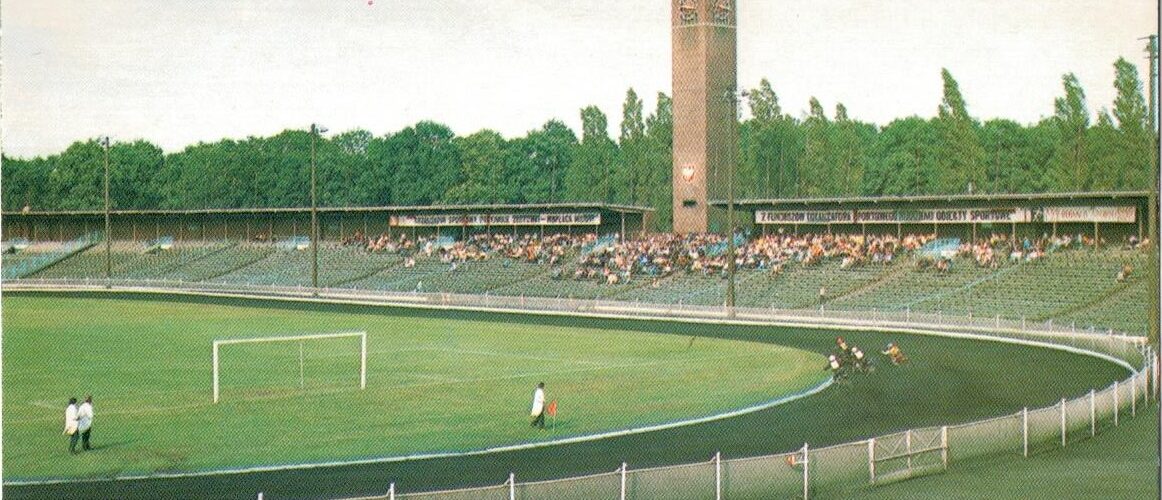Stadion Olimpijski był budowany w latach 1926-1928. Początkowo odbywały się na nim mniej ważne imprezy o charakterze sportowym i kulturalnym. W 1933 roku obiektowi nadano nazwę Stadion Hermanna Göringa, a w latach 1935–1939 został rozbudowany. Do 1941 roku rozegrano na nim 5 międzynarodowych meczy piłkarskich niemieckiej reprezentacji narodowej.
Po zakończeniu II wojny światowej Wrocław powrócił po wielu latach do Polski. Stadion został odbudowany z dużych zniszczeń i rozbudowany. W 1948 przyjął nazwę „Stadion Olimpijski im. gen. Karola Świerczewskiego”. W 1978 roku wybudowano wokół Stadionu Olimpijskiego cztery osiemdziesięciometrowe maszty oświetleniowe, będące charakterystyczną cechą obiektu. W 1987 roku reprezentacja Polski rozegrała na Stadionie Olimpijskim ostatni czternasty mecz piłkarski.
W 1991 roku stadion został wpisany na listę zabytków. Obecnie głównymi użytkownikami obiektu są żużlowa drużyna Sparty oraz drużyna futbolu amerykańskiego Panthers. Zmagania sportowców może obserwować 13 675 widzów.
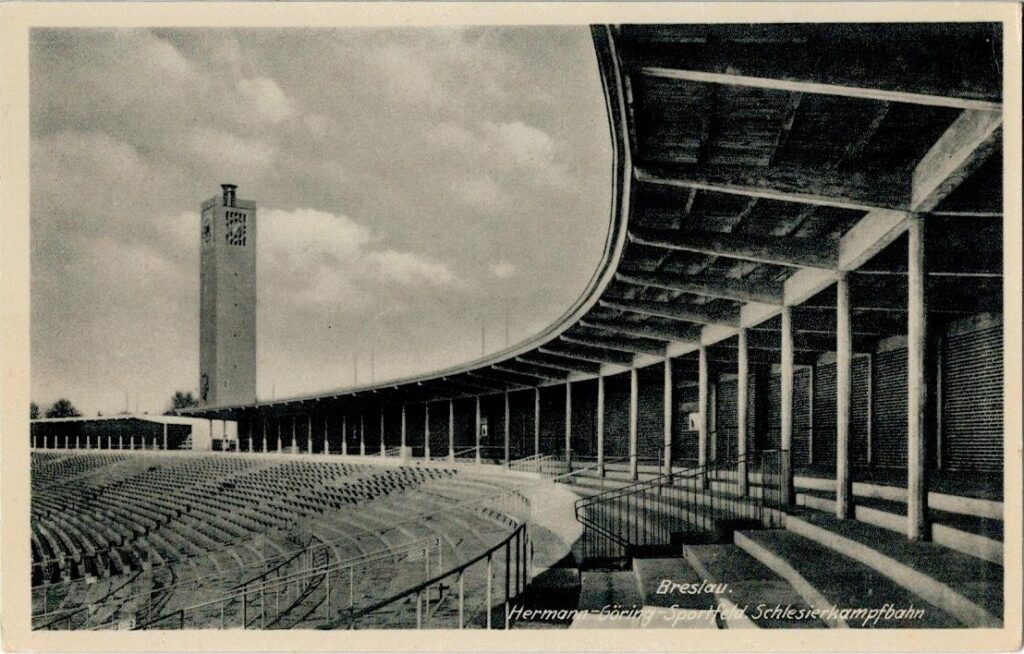
(1) Circa 1935. Wyd. Kunsterverlag Bruno Scholz, Breslau. Wymiary: 9,0*14,0 cm. Nr: 668550.
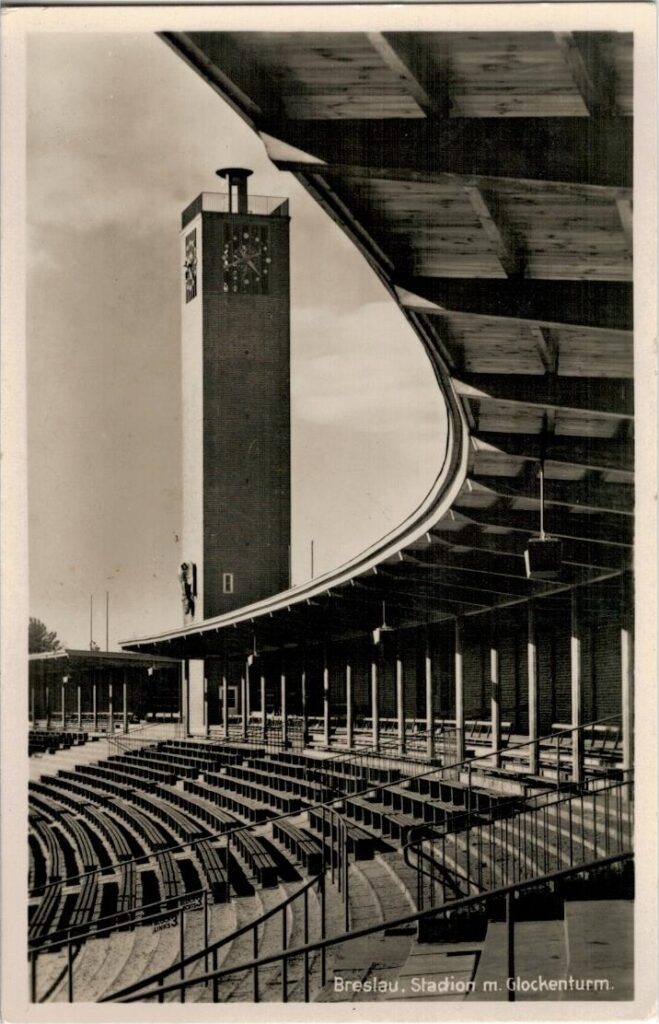
(2) Circa 1944. Wyd. Rudolph Renner, Inh. Alfred Renner, Breslau.
Wymiary: 9,1*14,0 cm. Nr: brak.
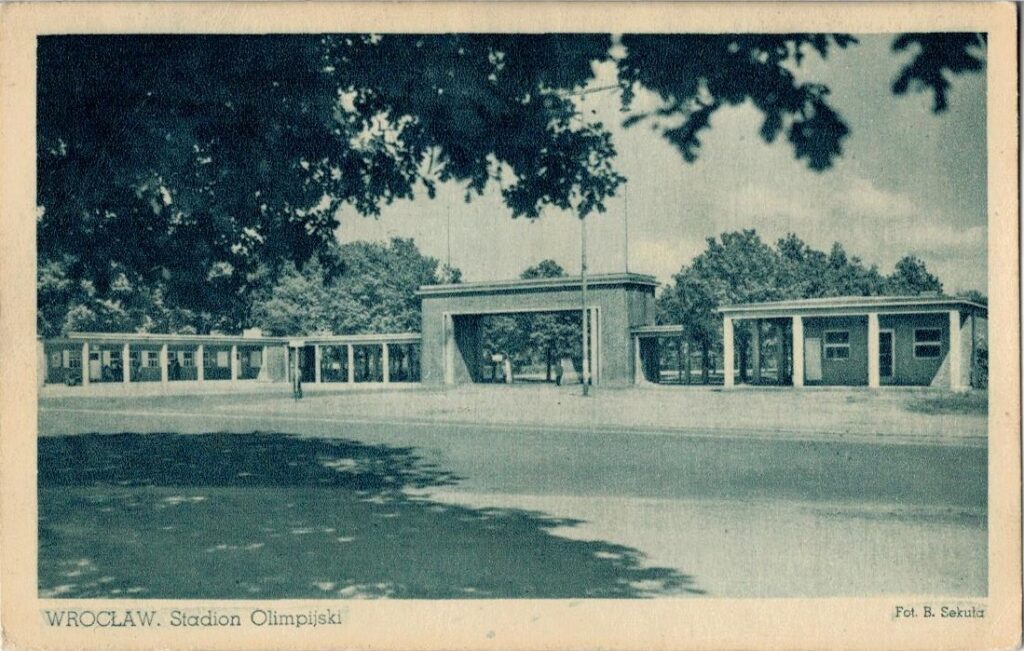
(3) Circa 1948. Wyd. Miejski Komitet Odbudowy Warszawy
oraz Dolnośląska Rodzina Radiowa we Wrocławiu. Wymiary: 8,9*14,0 cm. Nr: ?.
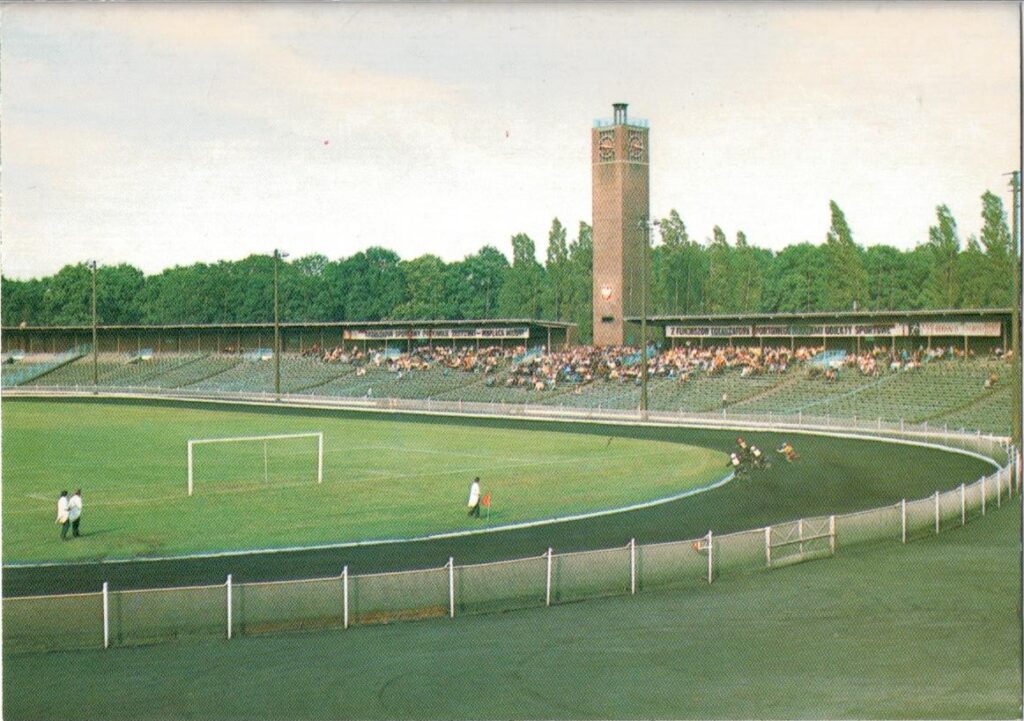
(4) Circa 1987. Wyd. Krajowa Agencja Wydawnicza. Wymiary: 10,4*14,7 cm. Nr: 1204/87.
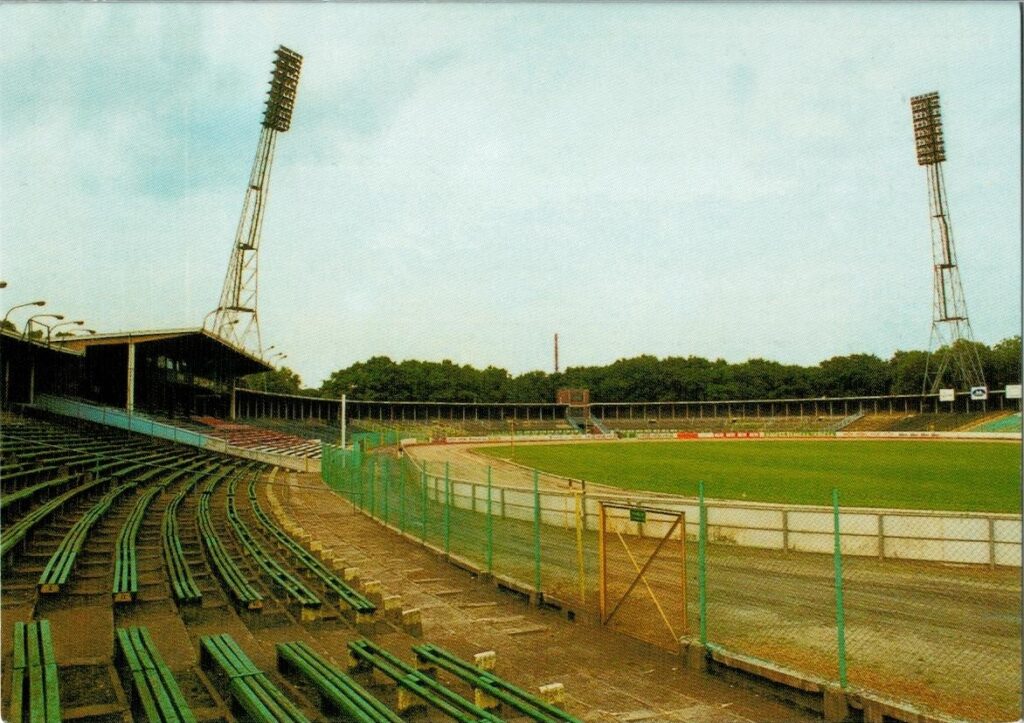
(5) 2001. Wyd. Stadionpostkarten Stephan Frank, Grub am Forst.
Wymiary: 10,5*14,9 cm. Nr: SF 11.
